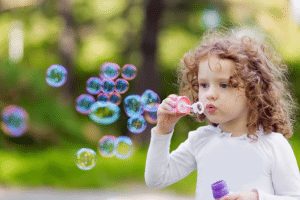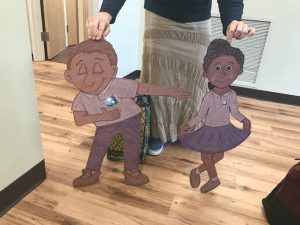Montessori vs. Reggio: What’s the Difference?
If you’re exploring early childhood education options, you’ve likely come across two thoughtful, child-centered approaches: Montessori and Reggio Emilia. But what sets them apart? And more importantly, how do you know which is the right fit for your child?
We’re often asked about the difference between Montessori vs. Reggio. Both methods offer rich, developmentally appropriate experiences, but they do so in different ways. Let’s break it down.
Montessori: Independence Through Structure
Founded by Dr. Maria Montessori in the early 1900s, the Montessori method is built around the belief that children thrive when given freedom within limits. Classrooms are intentionally prepared with materials that match each child’s stage of development. Children move independently through the room, choosing their work and repeating it until they reach mastery.
Key elements of Montessori include:
- Self-paced learning: Children work at their own rhythm, revisiting materials as needed.
- Mixed-age classrooms: Younger children learn from older peers, and older students reinforce learning by guiding others.
- Hands-on materials: Montessori math, language, and sensorial tools are self-correcting and concrete.
- Trained guides: Teachers observe, offer one-on-one presentations, and let the child lead.
The environment is calm, orderly, and respectful. Everything from the shelf layout to the tone of voice is designed to help children build concentration, coordination, and confidence.
Reggio Emilia: Learning Through Creative Exploration
The Reggio Emilia approach began in Italy shortly after World War II. It sees children as capable, creative thinkers who build knowledge through exploration and relationships. Unlike the structured materials in Montessori, Reggio classrooms focus on:
- Project-based learning: Children dive deep into long-term investigations inspired by their interests.
- Art and expression: Drawing, painting, sculpture, and dramatic play are seen as languages of learning.
- Collaborative work: Teachers, children, and families co-construct knowledge together.
- Emergent curriculum: There’s no pre-set lesson plan—topics evolve based on children’s questions.
The teacher acts more like a researcher, documenting student conversations and building the curriculum from their ideas.
What Kind of Child Thrives in Each Approach?
The Montessori model often appeals to children who enjoy focused, independent work. It supports those who benefit from quiet structure and clear routines.
Reggio Emilia can be ideal for highly expressive children who love storytelling, messy art, or group conversation. It allows big ideas to take root and flourish in unexpected ways.
But most children are a mix. And that’s where MKU’s unique approach shines.
The MKU Trifecta: Why Choose Just One?
We don’t make parents choose between Montessori and Reggio. We blend both along with our proprietary DaVinci Kids curriculum to give children the best of all worlds:
- Montessori structure ensures that children build foundational skills through hands-on, independent work.
- Reggio-inspired enrichment offers time for creative thinking, collaboration, and long-term projects.
- DaVinci Kids introduces STEAM concepts through art, science, and innovation labs.
This “Trifecta” model respects the whole child: logical and expressive, independent and collaborative, structured and spontaneous.
In practice, that might look like:
- A child choosing bead stair work in the morning, then painting insects from the school garden during Reggio project time.
- Journaling in their DaVinci notebook about a science experiment they explored outside.
- Working alone one moment, then building a cardboard city with peers the next.
This balance honors the unique rhythms of each child and helps them grow in every dimension.
Why the Blend Works for Real Families
Parents don’t always fit neatly into categories either. Some are drawn to the calm focus of Montessori. Others love the creative freedom of Reggio. With our approach, you don’t have to compromise. By offering both, we:
- Support different learning styles
- Reinforce both academic and social-emotional growth
- Prepare children for the variety of learning environments they’ll encounter later
Plus, our guides are trained in both approaches. This ensures they know when to step back for independence and when to lean in for collaboration.
Real World, Real Results
It’s one thing to talk about pedagogy. But what matters most is how children feel and grow. Families often tell us their children:
- Talk more confidently at home
- Initiate more independent tasks (like dressing or setting the table)
- Express ideas through drawing, story, or block play
- Ask thoughtful questions about the world around them
These outcomes reflect the power of an integrated, child-centered curriculum, not a rigid adherence to one theory.
Still Deciding Between Montessori vs. Reggio?
You don’t have to choose between structure and creativity. With MKU’s Trifecta model, your child can experience both. Our schools are designed to honor curiosity, encourage independence, and support early learning in meaningful, joyful ways. Schedule a tour to see it in action.


